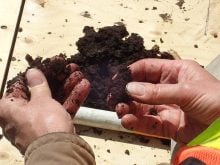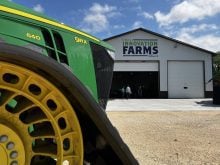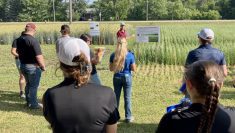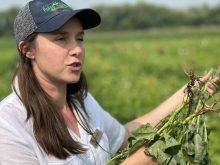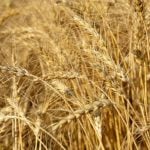A new program is taking aim at agricultural greenhouse gas emissions.
Last month, the Manitoba Association of Watersheds (MAW) launched the first phase of the Prairie Watersheds Climate Program, a part of the federal government’s On-Farm Climate Action Fund (OFCAF). That’s a $200 million, three-year fund (from 2021 to 2024) that underwrites 12 different programs to support farmers in adopting management practices that store carbon, reduce greenhouse gases and provide other environmental benefits, such as improved biodiversity and soil health.
Read Also
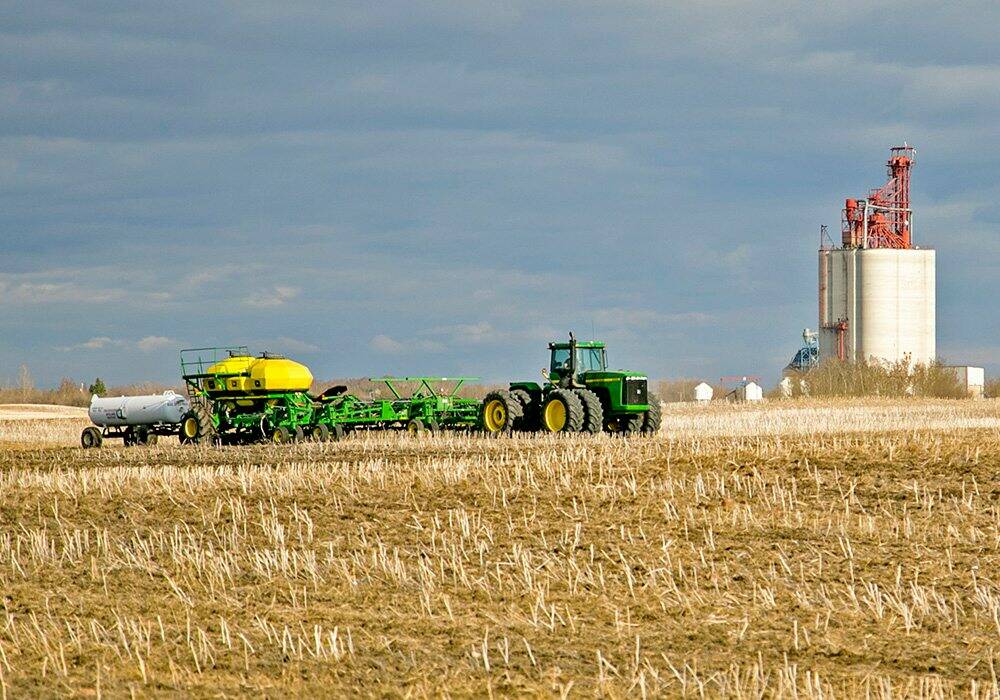
Better data on fertilizer emissions with the Internet of Things
Web of soil sensors looks for live insights on farm greenhouse gas emissions and nitrogen fertilizer application.
OFCAF is providing up to $40 million to MAW to administer the project in Manitoba and Saskatchewan. The funding is to be split roughly evenly between the two provinces.
The project focuses on reducing the release of nitrous oxide (N2O) through nitrogen management (45 per cent of funding), cover cropping (35 per cent of funding) and rotational grazing (20 per cent of funding).
“We are ready to roll,” said Lynda Nicol, MAW executive director, in the release announcing the launch. “There has been a tremendous amount of hard work and collaborative effort behind the scenes that has led to today’s program launch. We have been in constant motion with a team of internal staff and external industry partners ever since the announcement was first made public earlier this year.”
The goal is to get farmers to adopt practices that will reduce N2O emissions by subsidizing those practices. In terms of nitrogen management, the program provides funding for a number of activities (see sidebar).
Funded projects must be new practices for the operation or be expanded from what has been practiced in prior years on new land or new acres, and must be recommended by an agronomist, agrologist or certified crop advisor.
At the recent Crop Diagnostics School, John Heard, soil fertility extension specialist for Manitoba Agriculture, and Anne Kirk, a cereal crop specialist with Manitoba Agriculture, discussed the program and recent research.
Adding legumes
“There are some very large grant amounts to do things that people know that they should be doing anyway,” Kirk said, referring to the subsidy for adding legumes to crop rotation. “They can get paid $35 an acre to plant peas or soybeans for the nitrous oxide reduction within their rotation, which is a lot of money to plant something you should already be doing.”
Variable rates
Heard said farmers can access funding to implement variable rate fertilizer applications that prove effective at reducing NO2 emissions.
He noted a study done by Aaron Glen at Agriculture Canada in Brandon that found NO2 emissions could be decreased by 10 to 90 per cent by putting the right rate in the right place in the field. The incentive for doing this would be 50 per cent of the cost, up to $10,000.
“So that’s one way to access the dollars and use them,” says Heard.
Split-applications
“Split applying nitrogen is a winner across 13 experiments,” Heard said, noting N2O reductions of up to 48 per cent have been observed in studies.
“That reduction is because I don’t have all my nitrogen upfront — I withhold it and come back in-season with a portion. Manitoba research showed the highest yields we ever achieved with split application.”
However, that project received rain within five days.
“That’s the thing in the Prairies, if you lay nitrogen on the surface, it could become stranded or lost to the plant if you don’t get rainfall. So there’s also a risk that comes with this.”
Enhanced fertilizers
Heard said Mario Tenuta, a professor and nutrient management researcher at the University of Manitoba, has done 16 experiments with enhanced fertilizer and saw a 20 per cent reduction in nitrous oxide.
Unfortunately, there doesn’t appear to be much yield increase associated with applying these fertilizers.
“All the yield increase that we see in research plots is minor. In fact, it’s infrequent that we see yield increases,” Heard said. “These are products to protect nitrogen from being lost to leaching and nitrification. And in the Prairies, that rarely happens, so it’s been a tough sell.”
However, an incentive that funds 85 per cent of the additional cost could encourage farmers to try it.
Nitrification inhibitors
With nitrification inhibitors like eNtrench, N-serve or Centuro, there are even better reductions in N20 of 31 to 33 per cent.
“But again, no yield impact,” says Heard. Still, the subsidy could make the difference. “I think farmers are going to be somewhat excited about trying some of these, now that the government’s backstopping them.”
The question is what happens after the incentive program runs out.
“I guess the shortfall of any subsidy or incentive-based program is that there’s an end date,” Nicol said. “But by design, this program is incorporating education and awareness, and being armed with the information as to why and how to implement these things, and supported with the financial incentives to alleviate some of the upfront cost burden, the hope is that producers will see the success on farms and want to continue these programs down the line because they see the value of it.”
On July 29, MAW will be doing a presentation at the Manitoba 4R Nitrogen Management Field Tour, near Manitou. The event will also take a closer look at the science behind some of these N2O reducing practices.
For more information and to register, contact Mario Tenuta by email at 204-290-7827, or John Heard by email at 204-745-8093, before July 22.
Eligible nitrogen management activities
Those interested in trying some of these techniques can apply for funding to offset some of the cost.
The following management practices could qualify:
- 85 per cent of the increased cost of slow-release fertilizer compared to regular nitrogen fertilizer, to a maximum of $75,000
- 85 per cent of the cost of nitrification and urease inhibitors, to a maximum of $75,000
- 50 per cent of total cost for agronomic support for nitrogen management plans, to a maximum of $10,000
- 85 per cent of total cost for soil testing, to a maximum of $2,500
- 50 per cent of total cost for soil mapping, to a maximum of $10,000
- Adding legumes to crop rotation: $35 per acre for establishment, when approved under a one-year contract; or $70 per acre when approved under a two-year contract, with the payment split into a $35 per acre payment in year one and a $35 per acre payment in year two, upon approval and annual verification
- Upgrading seeder equipment to allow for banding, side dressing and injection of fertilizer, $200 per foot of seeding equipment, to a maximum of $30,000
- Funding is also available for split fertilizer applications, upgrading manure injection and incorporation equipment and offsetting the higher costs of synthetic fertilizer substitutes such as manure, compost and digestates. Funding levels for these will be determined on a case-by-case basis.






